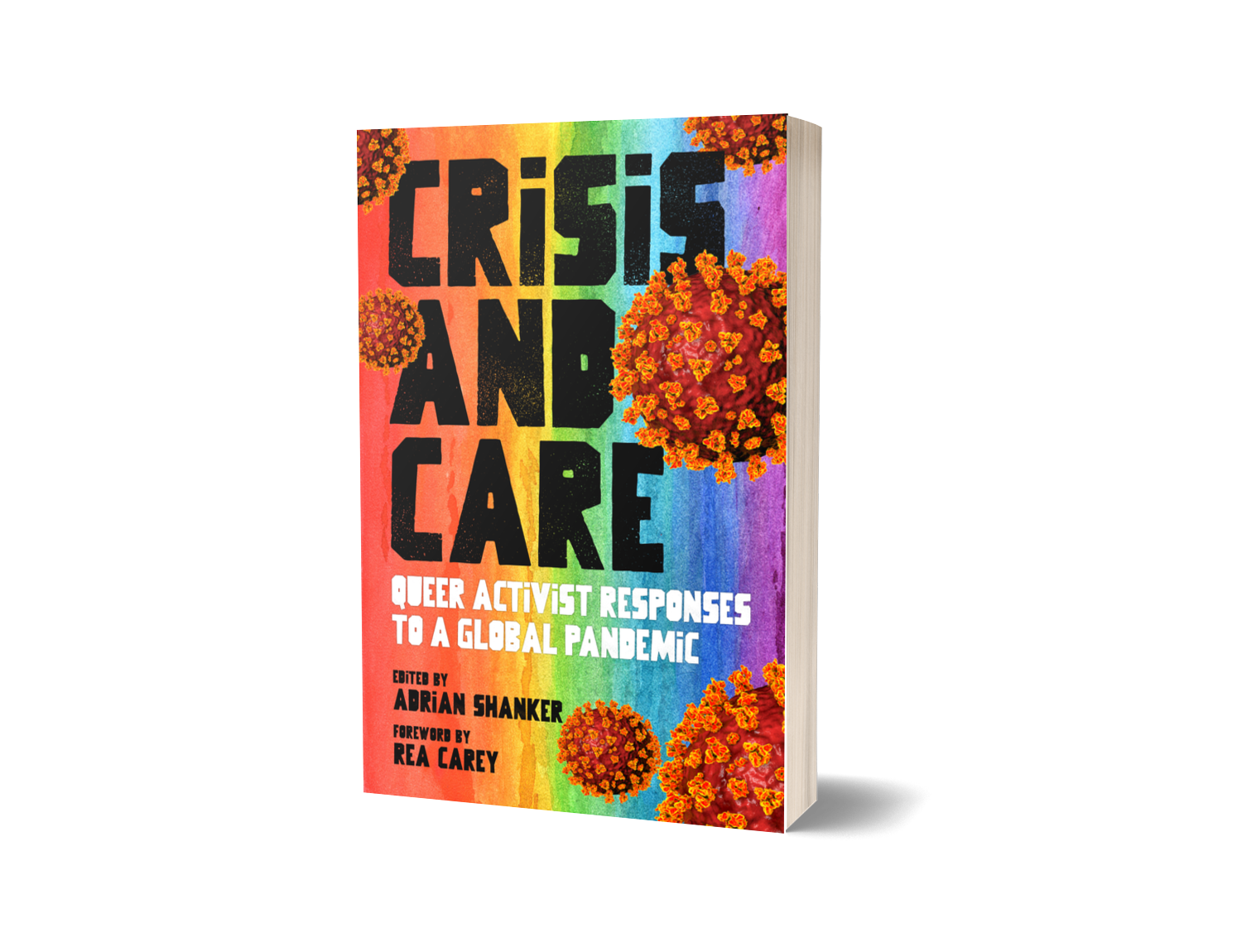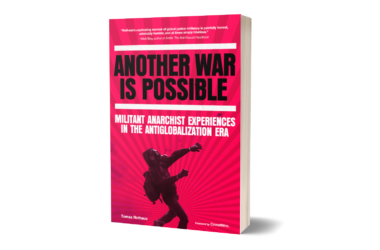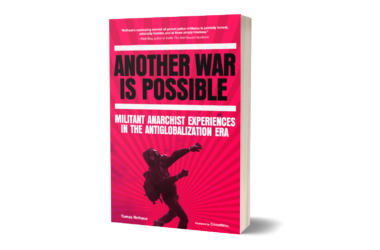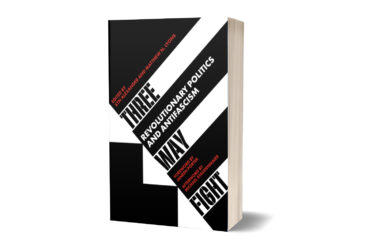By Luke O’Neil
Welcome to Hellworld
August 17th, 2022
The following essay by Zephyr Williams is excerpted from the newly released anthology Crisis and Care: Queer Activist Responses to a Global Pandemic (2022, PM Press), which looks at how LGBTQ+ people and communities responded to the early days of the COVID-19 pandemic, and what lessons were learned that could be applied to future crisis points. Order a copy of the book here.
Today’s issue of Hell World on the “teacher shortage” can be found here:
Please chip in a few bucks to support this newsletter if you can thank you.
Breathing in Solidarity
by Zephyr Williams
Let’s all pause and take a collective breath. Inhale for 4 . . . 3 . . . 2 . . . 1.
Hold for 7 . . . 6 . . . 5 . . . 4 . . . 3 . . . 2 . . . 1. and
Exhale for 8 . . . 7 . . . 6 . . . 5 . . . 4 . . . 3 . . . 2 . . . 1. . . .
The first year of the COVID-19 pandemic was intense, a veritable game of social justice whack-a-mole. It felt like every time we started getting an ounce of control over one situation another one would pop up, laughing maniacally as we pivoted to restrategize. COVID-19 would have been enough of a challenge as we navigated the new normal of quarantine, social distancing, and Zoom meeting after Zoom meeting. Then came George Floyd, Breonna Taylor, Dion Johnson, and Tony McDade. All Black people. All murdered by cops. Enough was finally enough. Communities across the country rose up to face down the dynamics of power, privilege, and race and demanded a new way of life. The resounding message was clear. The tools of oppression are too costly to ignore or sustain any longer.
COVID-19 made visible what those of us on the ground, community organizations and activists alike, have known for years. Prisons and jails are dangerously overcrowded, unhygienic, violent, and dehumanizing institutions. It wasn’t a question of if COVID-19 would spread through correctional facilities but when Jails and prisons are not designed for people, let alone for preventing the spread of a deadly virus. Social distancing is near physically impossible in an eight by six–foot cell crowded with people. Meals are mostly communal, with incarcerated people seated elbow to elbow. Personal protective equipment and cleaning supplies were also in short supply. Frequent handwashing is difficult when soap is not readily available. Most people on the inside are not provided with soap; they must buy it from the commissary. During COVID-19, correctional facilities simply didn’t have it. In many facilities, alcohol-based hand sanitizer is considered contraband.
Beyond that, incarcerated people, especially in local jails, cycle in and out; and correctional staff leave and return daily, often without screening. Testing was in short supply so it was hard to know exactly who did and did not have COVID-19.
When incarcerated people were tested and found to be positive, they were often sent to solitary confinement. In general, there was a lack of basic protection and conflicting information, not only about COVID-19 but also about how it was spread. Incarcerated people were left to die. This is especially alarming given that people in these facilities are more likely to be immunocompromised due to age, HIV/AIDS, or other chronic health issues.
The COVID-19 pandemic was a wake-up call about these conditions inside correctional facilities for many people, one which also drove us to reassess how we serve our communities. Our understanding of the work remains unchanged, but how we plan to achieve our vision of liberation has changed. We were forced to reorient and strategize, map out our resources and needs, and form new collectives.
Like many other community organizations, Black & Pink rallied behind our people. We raised rapid response funds and resources through crowdfunding, mutual aid networks, and emergency grants. This allowed us to put money on our incarcerated people’s books so they could purchase needed items.
We created networks of people inside, so that we could reach even more people. Bailing people out became a catch-22. If we got people out, where would they go? Couch surfing didn’t seem like a viable option given the stay-at-home orders and the call for social distancing. How would they get groceries or find employment? We were caught between getting our people free and providing them stable and affirming access to the care and community that is needed upon release from incarceration.
We banded together with other organizations to demand a reduction in dangerous overcrowding by releasing the elderly, those with HIV/AIDS, other immunocompromised people, individuals with less than eighteen months left on their sentence, and pretrial detainees. The risk of carefully releasing people was vastly outweighed by the risk of leaving everyone inside. We demanded that jails and prisons prioritize the health and safety of incarcerated individuals by providing them with free hygiene and cleaning products, allowing for more phone calls, as visitations were shut down, and providing free testing, screening, and treatment of COVID-19. Given that the majority of COVID-19 clusters were inside correctional facilities, it was only a matter of time before those of us on the outside were impacted as well. Protecting people considered the least among us would ultimately protect all of us.
Post-COVID-19, will be a rare moment of opportunity. The mere fact that correctional facilities across the country were releasing incarcerated people in droves signaled that perhaps just reforming prisons isn’t the answer. Maybe we shouldn’t be incarcerating this many people in the first place. Perhaps the time has come to listen to the wisdom of prison abolitionists like Mariame Kaba, Angela Davis, Patrisse Cullors, and Ruthie Wilson Gilmore.
It’s a much larger conversation to figure out just how millions of people got incarcerated in the first place and whether the prison system should be our answer. It’s about more than just decarcerating as many people as possible to stave off a deadly virus. People are not only sentenced to time. They are sentenced to a lifetime of stigma, rejection from job opportunity after job opportunity, unstable housing, and roadblocks to necessities. Most will end up impoverished and without connection to care or affirming support upon returning home. This is state-sanctioned violence, discrimination, and neglect, a death sentence far outpacing the effects of COVID-19. Many of these people will come home. They are still our friends, our neighbors, and part of our community. They deserve better. We’re all in this together.
We must act to take advantage of what might not have been possible prior to COVID-19. We know that there is no going back to normal or business as usual. Racism, homophobia, transphobia, misogyny, ageism, ableism, and other forms of oppression work together to keep people locked down and pushed out. Prison systems became our default, with a mentality of “by any means necessary.” It translated into a callous disregard for human life during a crisis. We must ask ourselves: Was our way of bringing people to “justice” always this way? Can we move beyond reforms to something more restorative, more transformative?
We can, and we are. For those of us organizing in prison abolition spaces, it comes down to how we relate to one another as a people and a community. The way our prison system relates to people now is through retribution. Harm occurs, but the people involved in it are not centered in the process. People cause harm and people experience harm, but the state steps in to remedy it. Those who experience harm are not valued or heard, nor are those who cause it allowed to be accountable in a way that makes sense for the people who experience it. Acting through retribution doesn’t allow for accountability or healing. The experience of harm is nuanced and complicated, because people are complex. Retribution is too simplistic a response to the breakdown in relationships that results from harm. Restoring these relationships through community support, active conversations, and inclusion offers a better solution.
COVID-19 offered a glimpse into this possibility. Even in the midst of the uncertainty and fear of a global pandemic, communities rallied around mutual aid practices, people sent one another care packages, handed out free weed, practiced physical social distancing with Zoom calls, and offered free self-care guidance like yoga practices and meditation, among other things. Unapologetic acts of love and service were happening before our governments stepped up.
Values of mutual aid and community care that organizations like ours and others have been advocating for and practicing took root in the everyday practices of communities. People figured out what safety looks like for themselves and determined their needs and how to meet them. Others in their community responded to these needs. People, whether they knew it or not, practiced transformative justice. A justice practice that is a Native way of life, and that, most recently, women of color, Black women in particular, drafted as an intentional blueprint to follow, was transforming communities across the country.
It became obvious that pain and violence are viruses themselves. Not only do they spread without corrective action, but, pointedly, punishment replicates the pain and violence. We have space for healing and meeting people where they are at home in our communities. We see them every day. Maybe we give a smile or a nod. Put people in cages, isolated and separated from communities, and we lose their humanity. We forget they too are worthy of respect and love. They too have inherent value. We must do better, folks—be better.
Transformative justice is about existing in a world centered on equity and access for all. It’s about taking stock of our current institutions and ways of relating to each other and recognizing the “isms” (racism, ableism, classism, sexism, etc.) and “ics” (misogynistic, transphobic, homophobic, etc.) are really just a hoarding of power and privilege. Transformative justice is about change and healing. It’s about having the courage to say: “I’m beautiful enough. Here are my resources, and here are my needs.” Transformative justice asks of us some tough questions, but they are questions that are already being interrogated. How can we exist together recognizing we are all complicated beings? How do we unpack conflict and harm? How do we shift ideas of power so everyone can have the things they need to empower themselves?
We keep trying. We keep failing. We keep figuring it out. Achieving liberation through transformative justice is a marathon, not a sprint.
Zephyr Williams (any/no pronouns) is the deputy director for Black & Pink. Their experiences with the system as a gender-liberated person have propelled him toward community building, addressing marginalization, and challenging our ideas of justice. Zephyr works to dismantle the oppressive systems that perpetuate violence on the trans and queer community through a transformative justice practice. Through this lens, we can reignite that spark of courage within each of us that fans our flames of embodied worthiness and love. None of us are free until all of us are free. In xyr spare time, Zephyr can be found curled up with a good book, analyzing natal charts, having a dance break, or traveling the trails.






